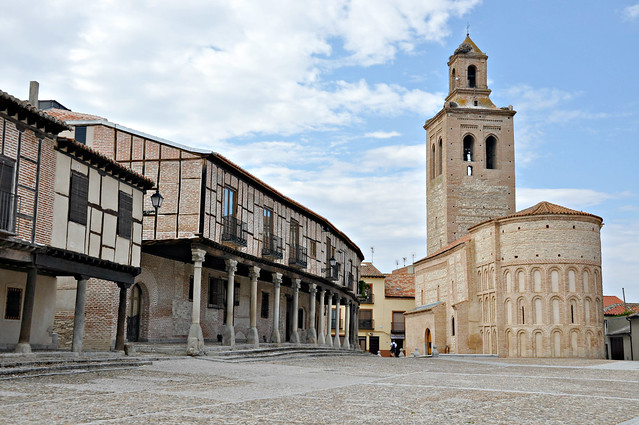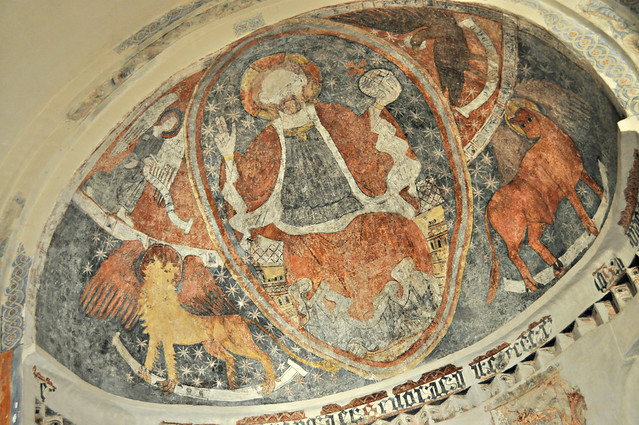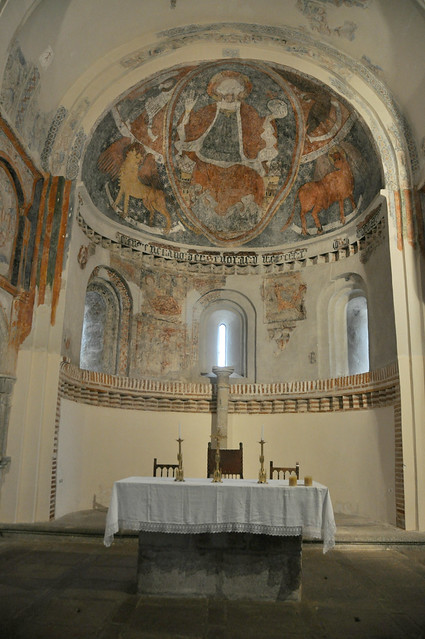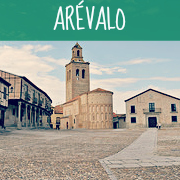
Um dos edificios mais relevantes da Plaza de la Villa em Arévalo é esta igreja que destaca pelo seu campanario, foi construída entre os séculos XII e XIII com um estilo Mudéjar. Faz parte de uma rota de quatro igrejas que partilham uma entrada de 3€ (se a memória não me falha) e no seu interior de decoração simples encontrámos pequenos tesouros arquitectónicos da época.
One of the most important buildings of the Plaza de la Villa in Arevalo is this church that stands out for its bell tower, it was built between the twelfth and thirteenth centuries with a Mudejar style. Is part of a route of four churches that share an entry of 3 € (if memory serves me) and within single decoration found small architectural treasures from that era.

Como as pinturas no tecto da ábside semicircular onde está o altar-mor, sobrevive desde o século XIV no seu formato original mas está claramente a precisar de restauro. Ao centro está Cristo dentro de uma mandorla (uma auréola oval) rodeado pelos Tetramorfos e com Jerusalém a seus pés. Fiquei a saber que os Tetramorfos são os evangelistas que descreveu Ezequiel alguns representados por animais: São Marcos (Leão), São Mateus (Anjo), São João (Águia) e São Lucas (Touro). É verdade que fora esta zona da igreja o seu interior não tem muito mais interesse.
Like the paintings on the ceiling of the semicircular apse where the altar is, it survives since the fourteenth century in its original format but it clearly is in need of restoration. In the center there is Christ within a mandorla (an oval halo) surrounded by the Tetramorph and Jerusalem to his feet. I learned that Tetramorph are the evangelists who were described by Ezekiel and some are represented by animals: San Marcos (Lyon), Matthew (Angel), John (Eagle) and Luke (Taurus). It is true that outside this area of the church the interior does not have much interest.





Our guide of:


Sem comentários:
Enviar um comentário